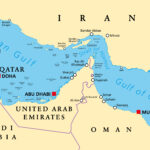Grounding Claims, Fire, Engine Damage and Piracy All Concerns for Cruise Liners
Cruise ships have been in the news a lot recently, but sometimes for the wrong reasons. Stories of passengers stricken with norovirus, or stranded in the Antarctic ice, are not what most people think of when it comes to a relaxing cruise.
However, such incidents are in the tiny minority, and for most people, a cruise is the holiday of a lifetime. Certainly the passengers on the maiden voyage of the Oasis of the Seas, which set off from its base in Florida in December 2009 on a cruise around the Caribbean, will see it as the ultimate experience. The Oasis of the Seas is the world’s largest cruise liner and the statistics are staggering.
Thinking big
At 225,282 gross register tonnage, it is more than three times the size of the QE2, and can carry 6,292 passengers plus a crew of up to 2,291. It has 16 passenger decks containing four pools and ten whirlpools, a rock-climbing wall, a basketball court, a miniature golf course, an ice skating rink, a fairground carousel, a central park with 12,000 live plants and trees, a 1,380-seat theatre and 37 bars and restaurants. It even offers scuba diving — without leaving the ship.
The Oasis of the Seas is just the latest in an inexorable rise in the size of cruise liners and this inevitably has an impact on their insurance. Also, because of their size, there are very few ports at which these super liners can dock. But in terms of insurance, Lloyd’s is able to provide a safe berth.
Richard Close-Smith, executive director, Willis Marine, explains: “Lloyd’s plays a very prominent leading role in cruise ship insurance and we estimate that as much as 50 percent of both the shipbuilding risk, and thereafter the hull and machinery insurance of the newest breed of super ships, is placed in Lloyd’s,” he says. “For war and piracy risks the Lloyd’s market is even more important as, when it comes to underwriting net lines without reinsurance protection, most roads tend to lead to Lloyd’s.”
Risks at Sea
One of the main insurable risks for cruise ship owners and operators is the loss or damage to the vessel, notably fire and engine damage, says Close-Smith. “Slightly more surprising are the grounding claims which may be partly a result of the continuing appetite for new and yet more adventurous itineraries,” he says.
“Piracy is potentially a huge theoretical concern but in practice less so, as cruise ships tend to be few and far between in the Gulf of Aden and Nigeria. It would also require a larger and more organized pirate attack to maintain control of a cruise ship versus a cargo ship,” Close-Smith adds.
Another important insurable risk for owners is loss of earnings or business interruption. The challenge for brokers, Close-Smith believes, is to include perils beyond conventional physical loss or damage such as infectious diseases, blocked ports and the inability of passengers to reach the vessel through say airport closure or even cancellations arising from a terrorist attack.
Catastrophe risk, particularly hurricane exposure, is an issue for underwriters, especially potential accumulation of risk in ports such as Miami, where several cruise ships are berthed in close proximity, says Close-Smith. But he points out that the windstorm risk is generally manageable as once a hurricane is forecast cruise ships can put to sea and keep out of the way.
As for pricing in the market, the premium rates for cruise ships are broadly flat although Close-Smith stresses that underwriters will look for increases where the claims record is poor. He says that there is an abundance of capacity in the market, which is just as well — the latest and largest ships are now valued at around $1.5 billion.
Source: www.Lloyds.com.
Topics Excess Surplus Lloyd's
Was this article valuable?
Here are more articles you may enjoy.


 China Construction Bank Sued in US Over Reinsurance Fraud Losses
China Construction Bank Sued in US Over Reinsurance Fraud Losses  Three Insurers Reject Chevron’s $57 Million Claim for Iran Oil Seizure
Three Insurers Reject Chevron’s $57 Million Claim for Iran Oil Seizure  Cracks in O’Hare Columns Aren’t Insured Property Damage, Just Bad Product – Court
Cracks in O’Hare Columns Aren’t Insured Property Damage, Just Bad Product – Court  Berkshire’s Jain on Cyber: ‘The Mindset Should Be You’re Not Making Money’
Berkshire’s Jain on Cyber: ‘The Mindset Should Be You’re Not Making Money’ 


